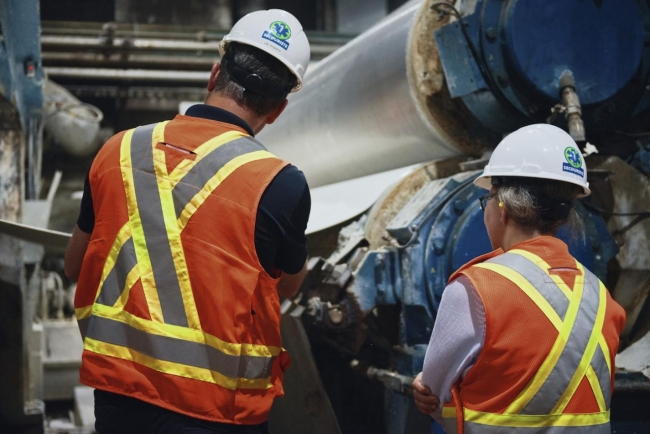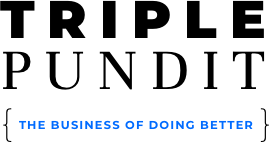NORTHAMPTON, MA / ACCESSWIRE / October 26, 2022 / Ever wondered what goes into the recycled-content products and packaging you see on store shelves? The short answer: a whole lot. Take Sustana Fiber's recycling mill in De Pere, Wisconsin, as an example. When the mill opened 30 years ago, it almost exclusively processed paper. Today, about half of the fiber it receives comes from product packaging like tubs, cartons, and even those potato chip cans lined with foil, Jim Schneider, the company's vice president of operations, told TriplePundit.
The mill's technology and procedures yield quality that is high enough for truly circular processes - for example, reprocessing a branded coffee cup into fiber that can be used for another food-grade cup by the same brand. Almost all incoming raw material is used for some purpose, whether that's food packaging or animal bedding.
With expanded capabilities comes a need for supply - and accessing recyclable materials requires efficient community infrastructure.
The U.S. Environmental Protection Agency reports that domestic recycling infrastructure needs to be strengthened on practically every side: Consumers are confused about what to recycle and how, manufacturers and recyclers are missing opportunities to collaborate, and markets for recycled materials are weak. Joe Riconosciuto, Republic Services' director of materials marketing and recycling, told American Recycler this month that amidst challenges to fiber recycling, "the entrepreneurial drive is alive and well in our industry."
For its part, Sustana Fiber certainly hasn't been waiting for paper to drop onto its doorstep. Through collaboration with local and national stakeholders, the company has been able to expand its offering, which means more business for the recycling mill at a time when fiber sources like office paper and newsprint are on the decline. It also means more businesses abiding by circular principles, keeping products and materials at their highest value as they move through the economy and eliminating as much waste and pollution as possible along the way.
Turning linear relationships between businesses and recycling mills into circles
Essential to a recycling mill's advancement are partnerships with the companies that design and sell products, with the goal of helping these brands to use more recycled materials and make their packaging easier to recycle.
For example, labels and other promotional materials are one market where Sustana Fiber sees promise. "That is a perfect example where there's a very valuable fiber source that currently, for the most part, is going to landfill," Schneider said. Sustana Fiber has developed technology to remove the siliconized layer from the label liner and get the fiber clean enough to make new labels, a process that would gum up conventional machines, and the Wisconsin mill is working with some of the largest U.S. label suppliers to create a system that's more circular.
In other cases, Sustana Fiber works with businesses as they develop new products. In an ideal scenario, companies would reach out to their local recycling mills to make sure the products they're designing are compatible with the mills' machines. "I don't need to know what it is," Schneider said. "But I could tell you very quickly if it's going to recycle in our process." One piece of advice he shares with companies is to be careful about how they innovate away from plastic. Though it has its problems, plastic is one of the easiest materials to separate from fiber while recycling and the materials used to replace plastic in some applications can be more difficult to process.
When partnering with businesses, the connection usually starts out linear - with a company wanting to recycle their products or packaging at end-of-life. "As these relationships develop, that's when that one-sided line starts to curve and turn into a circle. Well, you have to start a lot of lines before you get a circle," Schneider said. Eventually, some businesses are willing to step up from simply recycling their materials to putting that recycled material back into their products.
Throw out push marketing and empower consumers to pull recycling forward
The other side of outreach lies with consumers - and when it comes to educating the public, push marketing doesn't do much good. "You want the brand owners or the consumers being the ones pulling these things through," Schneider explained.
In an effort to engage greater consumer buy-in, in 2018 Sustana Fiber partnered with the Carton Council, an industry organization that aims to expand the recycling of cartons in the U.S. Efforts from that year-long collaboration included chat bots and quizzes on social media, as well as a pledge. "The Carton Council is doing a very good job in getting some of the messaging out there that these materials are recyclable," said Schneider. "[Cartons] are very viable sources of fiber."
In another move to collect more recyclable material through education, Sustana Fiber recently signed a commitment to increase the recycling of paper cups. The company is joined by North American paper mills and end markets that collectively represent 75 percent of mixed paper demand in the U.S. and Canada. "All recycling depends on end markets, and not all mills are readily equipped to separate the plastic coating found on paper cups," said Natha Dempsey, president of the Foodservice Packaging Institute, the organization that facilitated the commitment, in a statement. "However, the facilities that signed this declaration are shining a spotlight not only on their ability, but their commitment to accept paper cups."
Ultimately, Schneider would like to see everyone along the fiber supply chain understand the value of so-called end-of-life materials. "We do not want [fiber] to end up in a landfill, because it's an excellent raw material that has a long life to it, beyond its first or second use." Overall, he is hopeful about the direction the industry is taking: "I do believe right now we're at a point where, really, people are starting to act more than just talk."
This article series is sponsored by Sustana Fiber and produced by the TriplePundit editorial team.
Images courtesy of Sustana Fiber

View additional multimedia and more ESG storytelling from TriplePundit on 3blmedia.com.
Contact Info:
Spokesperson: TriplePundit
Website: http://www.triplepundit.com
Email: [email protected]
SOURCE: TriplePundit




